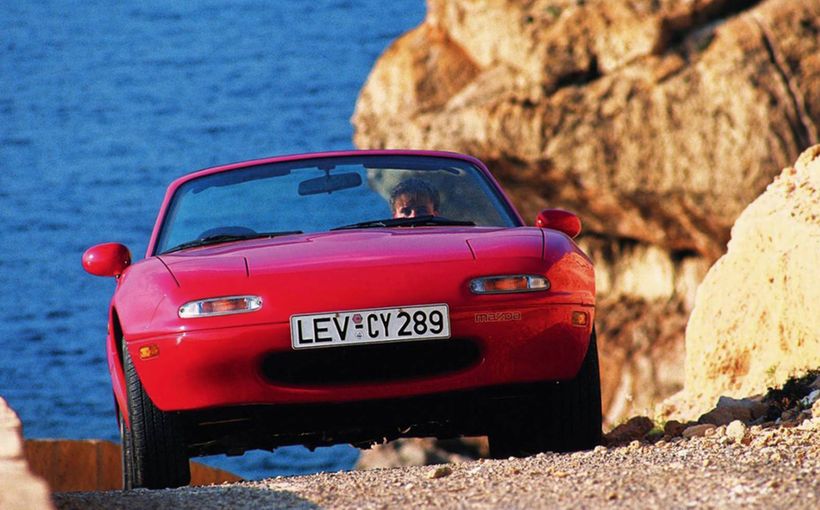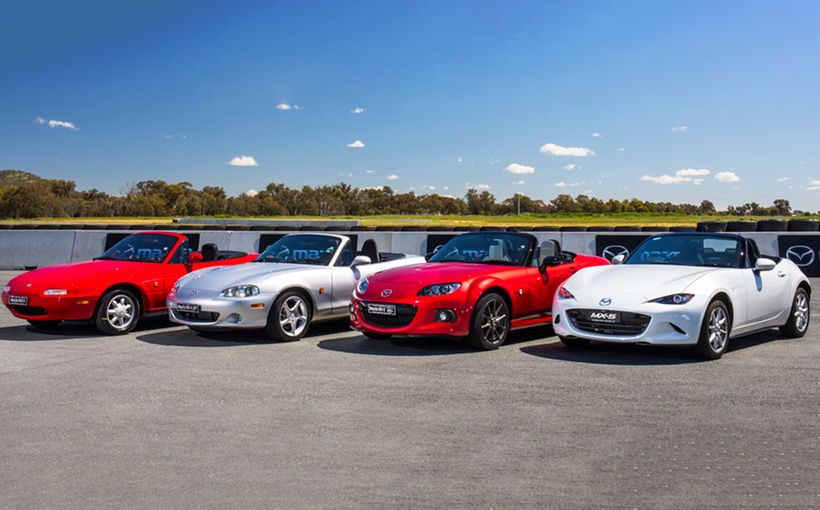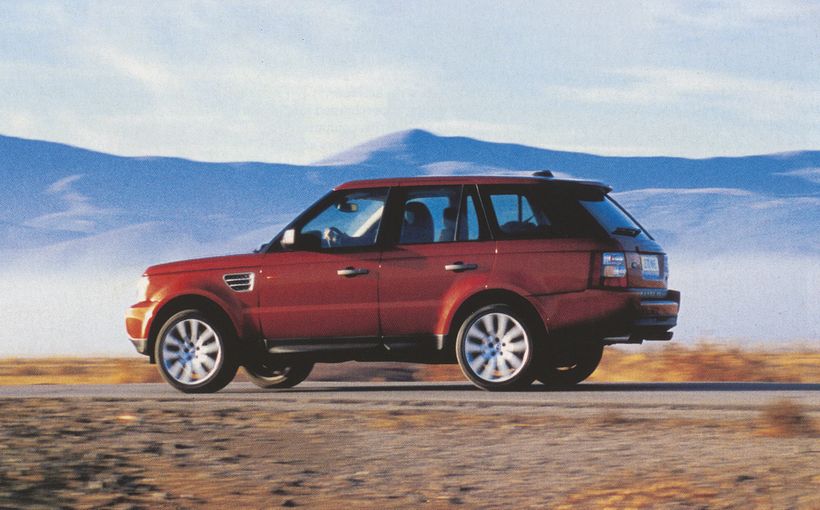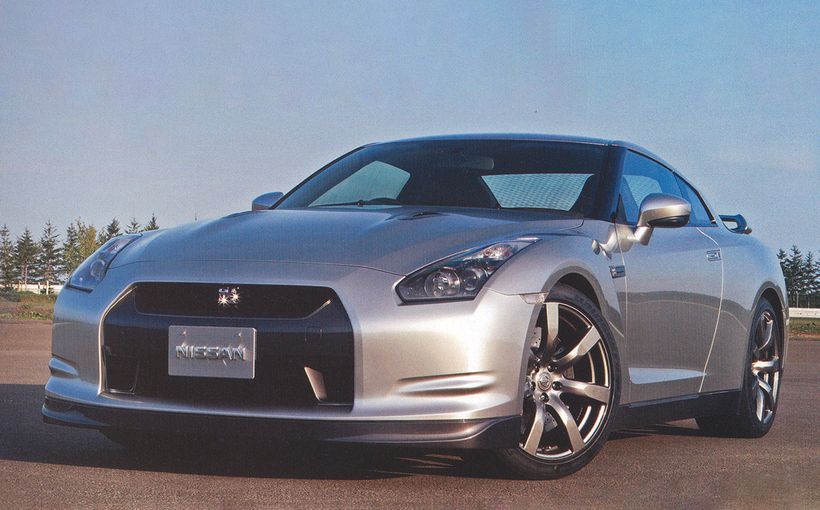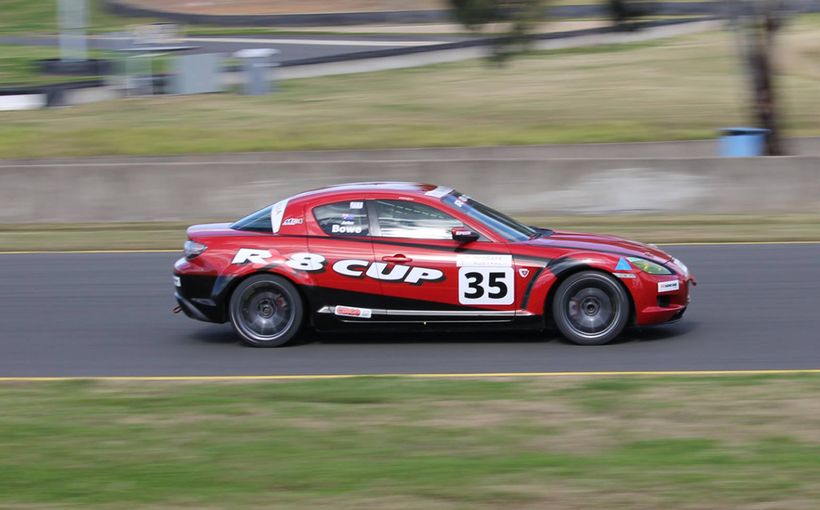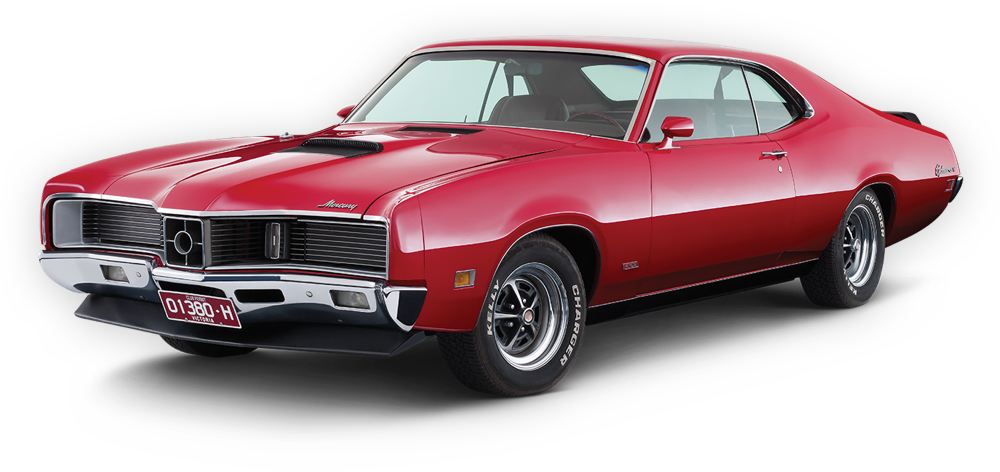
The driver of the white Porsche 944 - neatly dressed, well groomed, obviously a professional and probably a solicitor, for who else in their mid to late 30s could afford a 944 - was overcome with curiosity. He first saw our car in his rear vision mirror as the little coupe came up behind him and his eyes followed it as it went past. Perhaps he thought it was one of the new 944 Turbos.
He sped up to have a longer look and we could see his understanding grow by the second. He caught us at the lights, his window was down in a flash; he clearly wanted to talk. But only after he had taken in the rounded lines, the huge one-piece rear window, the aggressively flared guards that accentuated the car's squat look.
"It's easy to see where they got the styling from," he stated. "I think they cheated." There was no time for an answer. The lights changed and we went our separate ways.
But he had a point and he knew it. How dare this Japanese upstart assume to take on the appearance of a German thoroughbred? Variations on the same theme were made to us frequently during our time with both the manual and automatic versions of the new RX7. But, significantly, everybody knew it was a Mazda; that should please the men from Hiroshima.
Unashamedly styled to resemble the Porsche 944 - Mazda even calls it a "Euro-style body" - the still unique rotary powered coupe looks bigger, less agile than its predecessor, and lacks the same instant identification when seen from a distance in traffic. Somehow the wheels should fill those guards more dramatically and the nose is too rounded and could be sharper to retain more of the old car's character.
There is both 944 and 928 (witness those one-piece doors and the wide B-pillar) in the RX7 and that now huge one-piece rear window is a straight Camara copy. But America is the car's market - 77 percent of the 460,000 old-model RX7s were sold in the USA, and almost 10,000 came to Australia - and Porsche has the image Mazda (and all other makers of sports cars?) seems to aspire to.

Whatever you might think of its looks there is no denying the body's aerodynamic efficiency. With the front and rear spoiler fitted as standard in Australia, the drag coefficient is an excellent 0.30 - better than any Porsche.
That heavier look is reflected in the new model's weight of 1270 kg, a massive 175 kg more than its predecessor, yet its outer dimensions are virtually the same: a 10 mm increase in wheelbase, five mm more overall height, a reduction of 30 mm in overall length and an extra 20 mm in width, to 1690 mm, so still below Japan's 1700 mm tax restriction on beam.
To overcome the additional weight Mazda now fits the 13B engine instead of the old 12A engine for a 14 percent increase in capacity. Using the new engine meant beefing up the drive train and the suspension so it is hard to know which came first, the increased weight or the bigger engine. Either way the new car has substantially more power.
In the fuel injected form sold in Australia it develops 110 kW at 6500 rpm and 194 Nm of torque at 3500 rpm compared to the previous model's 85 kW at 6000 rpm and 152 Nm at 4000 rpm. Almost every component in the engine was modified, the six port induction chamber was reshaped, dual exhaust pipes were introduced and tuned to reduce the buzz and backfiring that characterised the old car.
There are no doubts today about the reliability of Mazda's rotary engine, indeed engines commonly give 250,000 km before requiring major repairs and in its latest form the drive train snatch seems finally to have been eliminated.
This is not an engine with vast reserves of torque and it doesn't feel all that powerful, although the performance figures suggest otherwise. What it does is rev more smoothly than any conventional engine, with a buildup in power that happens, not exactly slowly, but" in such an unfussed way that the buzzer that goes off when you reach the redline of 7000 rpm is completely justified. There is little urge below 3000 rpm, though the engine is more, flexible than the old car, and yet that beautiful smoothness is always there to remind you that this engine spins round and round and doesn't go up and down.

Use the gears intelligently - not at all difficult with the new excellent and very slick gearchange - and the RX7 has enough performance (and roadholding) to set quite outstanding point-topoint times. During acceleration runs it proved impossible to break traction at the rear end , even when the clutch was dropped with 6000 rpm on the tacho, but even so the standing 400 m time of 16.4 seconds is very good given the car's weight and knowledge that it is tuned to run on lead free fuel.
The last time we tested an RX7 it turned 17.0 second 400 m times so the improvement is measureable and immediately apparent on the road. The automatic isn 't quite up to the pace of the old car (that extra weight again) , with an 18.4 sec in Drive range (compared to 18.3) and 18.15 when run out to the redline; the old car could cover the distance in 17.8 sec. The auto loses so much time getting off the line that it can never make up the difference and it feels slow and gutless compared to the manual , unless you are constantly using the selector manually. And if you are prepared to do that then why not buy a manual to start with?
Fuel economy remains a bug- be::1r of the rotary engine, though when related to the car's performance it is respectable. except in the case of the automatic. The manual averaged 7.1 km/1 (20.1 mpg) overall while the automatic returned just 6.1 km/1 ( 17.3 mpg) and these figures will be typical of what the average owner can expect to achieve. The 63-litre fuel tank offers a reasonable touring range in the manual but drivers of the auto will be filling up frequently if they travel long and fast.
Mazda has chosen the gear ratios perfectly for the character of the car, for it will reach the redline in fourth and go slightly faster in overdrive fifth. The engine is much quieter in the new car and 180 km/h cruising is completely within its ability although there is a lot of tyre and wind noise which seems to come from behind the driver and front passenger.
It's hard to define exactly where, but it would become tiring over a long distance - a great shame, because the car's dynamics lend themselves perfectly to high speed intercity cruising.
Key to the car's newfound ride comfort and superior handling is the complex rear suspension that no doubt contributes to the car's extra weight. It has been described in WHEELS already but basically the semi-trailing rear arms use a combination of pivots, links and deformable bushes so that wher1 you brake and accelerate the rear wheels will toe-in for added stability, once the cornering forces exceed 0.4 g, while toe-out, needed for agility, is provided by compliance in the bushes. So the tyre changes from neutral alignment during straightahead drive to toe-out at the beginning of a corner, to toe-in as you go deeper and faster through a bend.

Whatever the theory, it seems to work: the new RX7 handles superbly, with very mild understeer and prodigious grip regardless of surface. The tail seems to squat, to almost literally sticktotheroad,undervery hard acceleration and the car truly goes where it is pointed. The new electronically controlled power steering has just 2.75 turns lock to lock and is always nicely weighted so that there is some artificial feel and a precise, positive feedback when the car is being pushed. At parking speeds it is light and the turning circle is excellent. The power assistance actually is almost zero by the time the car has passed 180 km/h.
That power steering is needed in such a relatively small car (it is standard in Australia, optional on some markets) does perhaps detract from the old car's light, agile feel, but it works so well in conj unction with the RX7's other dynamic features that it is a very minor complaint.
Biggest single improvement over the old model is ride quality. The longer-travel, more supple suspension gives the RX7 a superb ride by the standards of the class. This ability, combined with the performance and the roadholding, makes it a joy to drive, regardless of the road surface.
The brakes, too, are superb with a progressive pedal feel and sure-footed stopping power. Anti-lock brakes are just around the corner for the RX7, apparently, but we find the standard set-up more than a match for the car's formidable performance.
In many ways the cockpit is an object lesson in ergonomics (apart from the placement of the warning lights and clock on the top of the dashboard where they are impossible to see in the daylight). The RX7 has beautifully clear dials and perfectly positioned controls, but it is let down by poor visibility over the driver's shoulder - that too-wide B-pillar - and by bucket seats that are too flat in the cushion, so that most drivers don't have enough thigh support.
Unusual in a Mazda, there is no cushion tilt adjustment. The driver seems to sit on a ridge of padding which accentuates the problem. These points aside, the cabin is an intelligent and pleasant place to be. The driving position (seat apart) is excellent, the small three spoke wheel very comfortably placed.
Equipment levels are high, with air conditioning standard while the Limited model we tested comes with adjustable lumbar support and head restraints, leather covered steering wheel , power windows, electric operation for the two exterior rear vision mirrors, a cassette player with graphic equaliser, door entry lights and pockets, cruise control and an electric sunroof to justify its $3000 higher price over the Deluxe.
There are two tiny bucket seats behind the fronts, but they are a joke that shouldn't be taken too seriously. The boot is huge by sports car standards, made possible by a spacesaver spare tyre that stands vertically against the rear of the car.

One point that produced comment from many people was the horrid smell produced by the catalytic converter on the automatic. The stench wasn't apparent on the manual, which had covered more kilometres than the automatic, so perhaps the aroma will disappear in time.
The new RX7 is about $12,000 more expensive than the old car. This must frighten Mazda somewhat despite marketing's brave front. It takes the RX7 from a position where it was the cheapest of the cars you would normally compare it to - Alfa GTV6, Starion, Supra, 3000ZX and 944 - to being one of the more expensive, though it is still $25,000 cheaper than the 944. It is superbly finished, very well equipped and, in this company, fair value for money (but doesn't it make the new Celica seem a bargain!). Admire the styling or not, it is a Japanese car with character and charm and deserves to succeed, even if it isn't as individual as the old car.
How much will Mazda ask for the turbo model which is in the pipeline?

Go Back in Time with the Wheel Archive. Get FREE access to 5 years of Wheels archive content now!
Protect your Mazda. Call Shannons Insurance on 13 46 46 to get a quote today.



